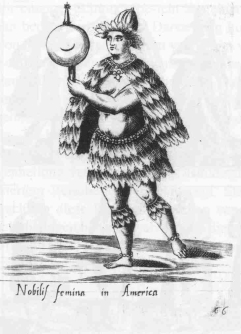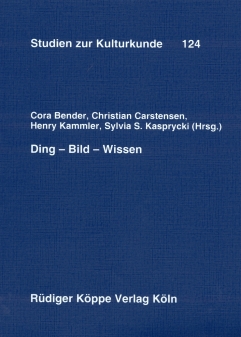



Although the Indian population groups of North America have been very popular in Germany all along, they still have been neglected by German ethnology. Since the beginning of the 20th century this terrain was left to American Cultural Anthropology which is able to analyse the object of its research in its close surroundings. Maybe German ethnologists have been reluctant to enter a sphere that the popular culture seemingly had a monopoly on and in which it would have been primarily necessary to fight against several positive and negative stereotypes.
The present anthology was arranged by the organisation of the project “Konstitution und historische Transformation indigener Wissenskulturen Nordamerikas” at the Special Research Course Programme Wissenskultur und gesellschaftlicher Wandel at the Goethe University Frankfurt/Main, and is dedicated to Professor Christian Fenimore Feest, who held the only chair of Ethnology of Indigenous North America in the German speaking area from 1993 to 2004. The participating scientists combined among others archival studies and field research results to explore the central notion of knowledge in the actual sociological and philosophical discourse. They used the chance to analyse the more or less time-lapse modernisation processes and the interaction with the respective cultures of knowledge.
To make accessible the motivation of museal collections, G. Bucher, E. de Vries and S.S. Kasprycki analyse the personality of the collectors, the circumstances of the development and the strategies of starting a collection. Self-image and image are object of the art-ethnological texts by A. Roth and D. Stambrau, as well as of the stereotype and source-critical articles by M. Schultze and J. Steffen-Schrade. I. Gareis, H. Kammler and J. Neurath comment on institutions, dynamism and interpretation of the inventory of knowledge of the indigenous cultures in Ibero-America. C. Bender and S. Lührmann illustrate in their articles the dialogue between American Anthropology and socio and historio-scientific theory formation by means of very different regions.
The articles by C. Augustat and M. Schlottner are connected through the subject of (re)contextualisation, the first by offering a museum-like presentation of a community in Venezuela, the second by orality in South Dakota radio. The synthesis of endogenous and exogenous inventory of knowledge and processes of its institutionalisation are illustrated by C. Carstensen and L. Gugel with examples from the plateau area. R. Hatoum dedicates his article about the inter-ethnical Powwow sub-culture in North America to the performative and sound-esthetical aspects of knowledge cultures in the course of time.
CONTENTS
Karl-Heinz Kohl:
Vorwort
Sylvia S. Kasprycki:
Geachtet und wie er die Welt sah – Von Ethnologen, Missionaren und der Faszination der Dinge (Anhang: Die Sammlung Antoine-Marie Gachet, ein Bestandskatalog)
Gudrun Bucher:
Die Insel Kodiak im Spiegel der Sammlung des Baron von Asch
Eike de Vries:
Aurel und Arthur Krause in Alaska – Entstehung einer Sammlung
Claudia Augustat:
Zur Musealisierung sakraler Tanzmasken der Piaroa (Venezuela)
Alexandra V. Roth:
Exquisite Match Mates – Realistische Skulpturen im Kunstschaffen der Haida
Doris I. Stambrau:
Joseph Beuys im Dialog mit Amerika – Ein „weißer“ Bruder „roter“ Künstler?
Miriam Schultze:
Überlegungen zur Darstellung fremder Lebenswelten im modernen Kinderbuch am Beispiel der amerikanischen Ureinwohner oder: Warum Ethnologen keine Kinderbücher schreiben
Jutta Steffen-Schrade:
Der Aztekin neue Kleider
Iris Gareis:
Koloniale Schulen und indigene Eliten in Mexiko und Peru
Johannes Neurath:
Ahnen im Werden – Mexikos Huichol und die Kritik des historischen Essentialismus
Henry Kammler:
Augustin und die Stiere – Eine Heiligenlegende als mündliche Quelle religiösen Wissens in San Agustín Oapan, Guerrero
Cora Bender:
„Primitive“ gegen den Staat? Eine Begegnung mit Geronimo und Pierre Clastres
Christian Carstensen:
Where the Salmon Run – Indigenous Fishing on the Columbia River and the Impact of a New Institution
Liane Gugel:
We Have Disobeyed Jehovah – Das Kirchenlied und seine Bedeutung für die Nez Perce
Rainer Hatoum:
Beyond Aesthetics – Dynamics of Musical Knowledge in the Context Powwow
Michael Schlottner:
Tuned By the Here and Now – Contextualization and Medial Representation of Spoken Words on Standing Rock
Sonja Lührmann:
„Das rote Amerika“ – Alaska und die sowjetische Debatte über die asiatische Produktionsweise
Christian F. Feest – Ein Schriftenverzeichnis
Als Hommage an Christian Feest ist der Band beeindruckend. Vielen Autoren und Autorinnen merkt man die persönliche Begeisterung an, die Feest in ihnen weckte. Insofern ist es sehr zu bedauern, dass Feest sich gegen eine Fortsetzung seiner Lehrtätigkeit in Frankfurt entschieden hat, insbesondere angesichts der Impulse, die er der kleinen Gruppe EthnologInnen Nordamerikas in Deutschland gegeben hat. [...] Insbesondere AnhängerInnen der neuen Ethnic History und Cultural-Studies-SpezialistInnen werden Anknüpfungspunkte und Inspiration für ihre eigenen Forschungen finden.
Heike Bungert in Amerikastudien, 52/4/2007, 579-580
© 2026 by Rüdiger Köppe Verlag – www.koeppe.de